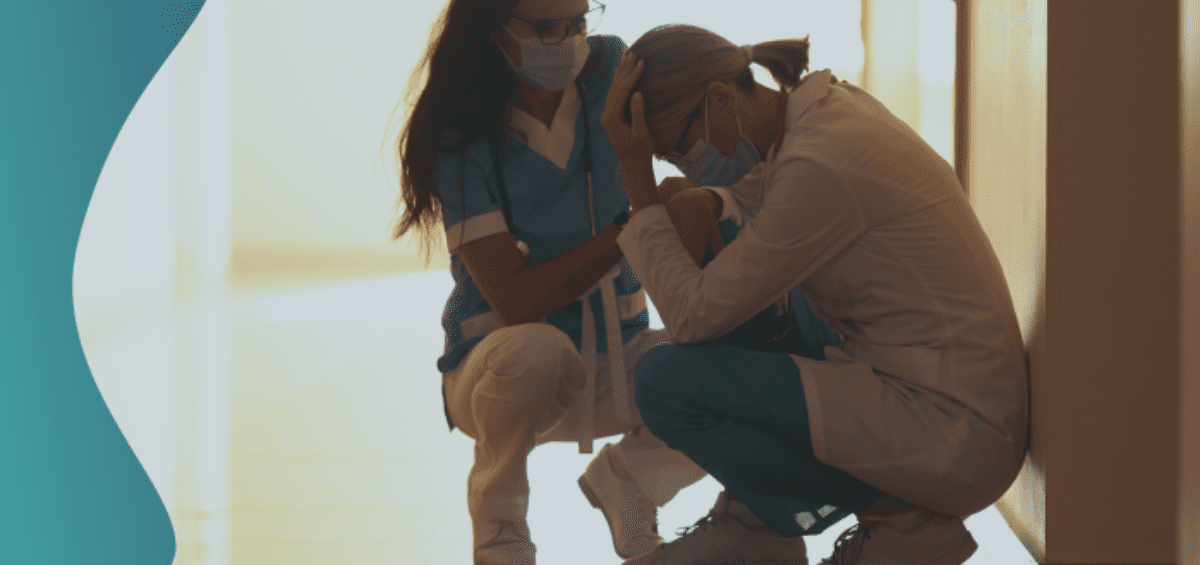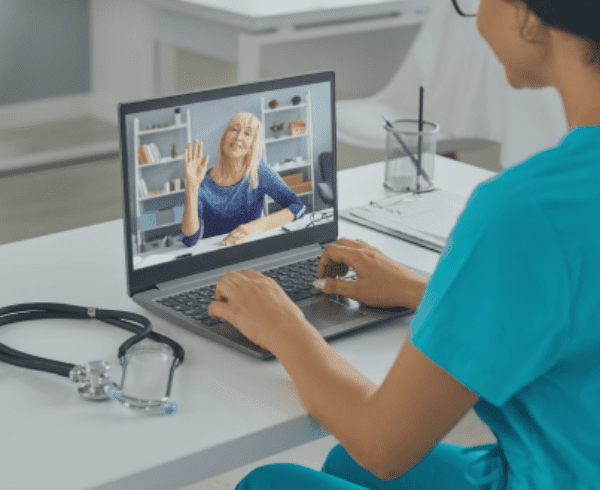December 6, 2021
2021 closes another unprecedented chapter in the ongoing COVID crisis, which continues to take a heavy toll on providers and clinicians across the health care industry.
According to monthly OCHIN Epic satisfaction surveys, the percentage of providers reporting burnout increased from roughly 24% pre-pandemic to a peak of 47% in September 2021, with an overall rating of 35% across the network. Commonly cited challenges—ranging from dwindling staff and financial resources to pandemic fatigue and the ever-changing landscape of new technology, compliance, and billing requirements—echo across the health care industry at large. These cumulative changes are taxing for large, well-funded health systems; but even more so for small organizations that may already be struggling to keep their doors open in rural and underserved communities.
That’s why OCHIN is working alongside its members and OCHIN Health Center Controlled Network (HCCN) participating health centers, like Kintegra Health, to find solutions that support the well-being of care teams and patients alike.
Growing and Caring for Staff
Located in the Charlotte Metropolitan Region of southern North Carolina, Kintegra Health is the largest Federally Qualified Health Center (FQHC) in the state and provides medical, dental, behavioral, school-based health care and pharmacy services to roughly 73,000 patients across 10 counties. Kintegra’s 700-person staff work hard to support about 220,000 patient visits annually, ensuring that local residents have access to high-quality, patient-centered health care, regardless of their ability to pay.
Led by CEO Robert Spencer, Lavondia Alexander, Chief Quality Officer at Kintegra Health, has been working with the health center’s broader leadership team to update its current team-based care model to enable further growth, without burning out staff.
“In the beginning, we added more clinical support staff and we’re finding that more staff doesn’t necessarily mean it solves the burnout issue,” Alexander said. “You have to really look at tasks, organization, workflows, tips and tricks of utilizing technology, automating things, using people to the top of their licenses. That’s the team-based model of care and not just additional staff.”
Kintegra’s experience attempting to scale to meet COVID-era demands is not unique.
In addition to navigating ongoing pandemic demands and uncertainty, high rates of turnover among their colleagues further contributes to exhaustion and burnout among clinicians who have stayed on in their roles. The U.S. also faces an exceptionally tight labor market where hiring isn’t always possible and rapid turnover costs clinics precious time and resources—especially in rural areas where new talent can be hard to attract.
In addition to re-structuring their team-based care model, Kintegra has put in place a number of activities to both measure burnout and increase well-being. Regular staff surveys assessing employee burnout and satisfaction are used to identify and mitigate stress points for staff. But listening to the human experience behind the clinical data is critical.
“You use the technology and the reporting to inform what you need to do,” Alexander said. “And when you do find out that people are burned out, simply ask, ‘What’s wrong?’…the reasoning behind the burnout may be different. Believe in what your providers and staff are saying, use enhanced workflow, technology, and think outside of the box to address the issues that come up.”
Connecting Tools to Workflows
Despite its many advantages, one commonly reported challenge compounding clinician burnout is the ever-changing landscape of health IT itself. Even routine software upgrades can slightly alter the look and feel of the OCHIN Epic electronic health records (EHR) system in a way that slows providers down. Thus, OCHIN has streamlined its software release schedule with the aim of minimizing unnecessary change, while continuing to meet the core operational needs of the network.
OCHIN is also working with members to better connect tools and technology to workflows that are seamless and adaptable to various clinical settings. For example, the addition of new preferred technology partners, such as Imprivata, enhances security through a single sign-on solution that allows clinicians to access patient information with ease and efficiency. And other tools like WELL’s text messaging platform have helped expedite outreach and follow-up related to COVID vaccination, in multiple languages.
Communications tools that are integrated directly into OCHIN Epic EHR also help providers manage the increasing volume of messages from patients and communicate securely with other members of their care team without having to navigate or log in to multiple platforms. Even small customizations can increase patients’ MyChart adoption, for example, which ultimately increases engagement and satisfaction with the care they receive. According to a recent KLAS report, Epic’s clinical communication platform, Secure Chat, received a 91.7% satisfaction rating among providers. The mobile-friendly tool enables greater collaboration and enhanced patient care coordination, while reducing overhead costs. And based on positive feedback from members, OCHIN recently expanded Secure Chat functionality to enable group chats.
“I work at OCHIN for the chance to support primary care providers,” said Dr. Stacie Carney, MD, OCHIN’s Chief Medical Informatics Officer. “It’s a hard time in health care. We’re all hearing from providers and clinicians about the challenges they face, and we want them to know we’re here to help.”
Moving forward in 2022, OCHIN has created a new Clinician Burden and Clinical Complexity (CBCC) committee that will review member feedback data in depth and proactively identify new ways to further reduce the administrative and technical burdens facing care teams, so they can focus on what they do best—providing high-quality care.
This blog is the first of a two-part series examining the issue of clinician burden. Stay tuned for part two focused on training and workforce solutions in January.
OCHIN’s HCCN is the country’s largest—helping nearly 100 diverse health centers serving over 2.2 million patients nationwide leverage health information technology (HIT) in transformative ways that foster continuous quality improvement. Learn more and participate in our next three-year grant cycle securely funded by the Health Resources and Services Administration (HRSA) of the U.S. Department of Health and Human Services (HHS).













